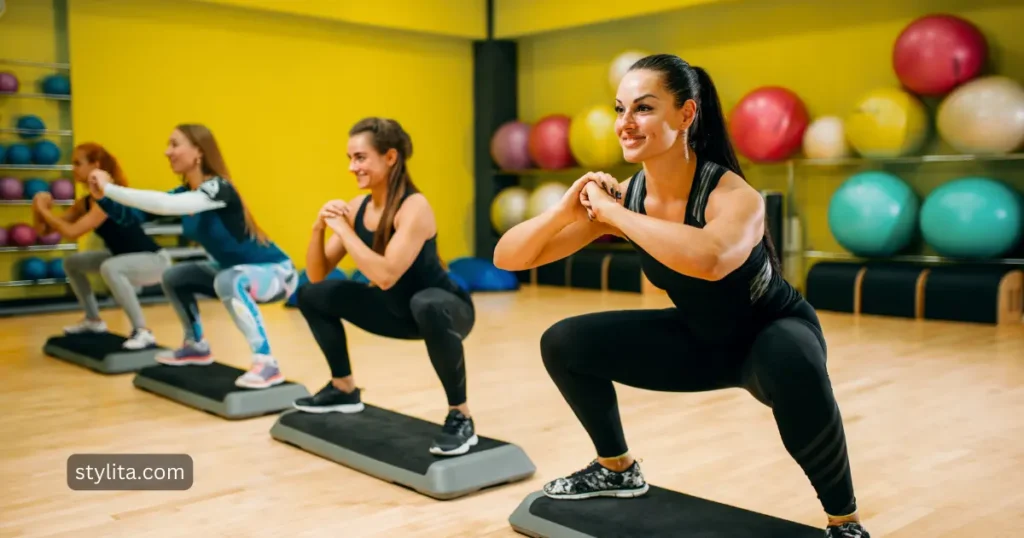Optimizing body composition is essential for achieving a more aesthetically pleasing and healthful physique. The distribution of fat and lean mass inside the body is referred to as body composition, and reaching a balanced and advantageous ratio is linked to a number of health advantages. This book examines the importance of body composition exercises, discusses the science underlying them, and offers doable solutions to assist you in starting a life-changing process.
Table of Contents
Definition of Body Composition
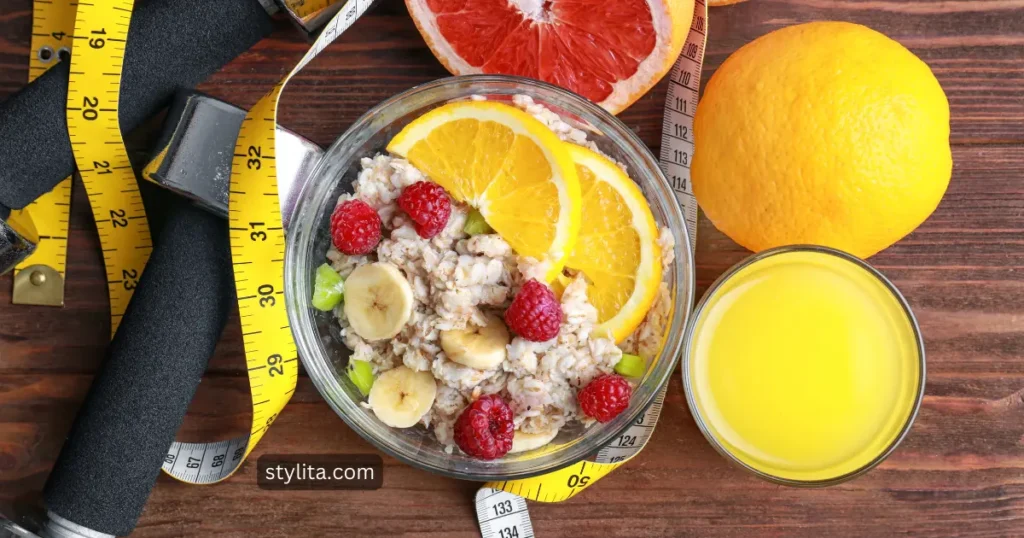
Beyond conventional measurements like weight, body composition is included. It entails calculating the ratio of lean mass—which consists of bones, muscles, and organs—to body fat. Optimizing body composition focuses on lowering fat while maintaining or growing lean muscle mass, as opposed to simple weight-focused goals.
Importance of Body Composition Workouts
Exercises focused on body composition are important for reasons other than just looks. A healthy body composition has a good impact on metabolic health, lowers the risk of chronic diseases, and improves general well-being, as research has repeatedly shown. You may enhance the composition of your body and gain the health benefits of sculpting it by including focused workouts into your program.
Goals of Body Composition Workouts
The primary goals of body composition workouts include:
- Fat Loss: Shedding excess body fat to achieve a healthier body composition.
- Muscle Preservation/Building: Ensuring that the weight lost primarily comes from fat, not muscle.
- Metabolic Boost: Increasing the body’s metabolic rate for enhanced calorie burning.
- Improved Health Markers: Lowering the risk of obesity-related conditions such as diabetes and cardiovascular diseases.
Understanding Body Composition

A. Body Fat Percentage
Finding out what your present composition is requires knowing your body fat %. Compared to only weight, this statistic gives a more accurate picture of your degree of fitness. While more sophisticated instruments such as bioelectrical impedance analysis (BIA) or dual-energy x-ray absorptiometry (DEXA) scans can yield accurate readings, more straightforward techniques such as skinfold calipers or smart scales can also yield insightful information.
B. Lean Body Mass
Your body’s whole mass, excluding fat, is called lean body mass. This comprises connective tissues, muscles, bones, and organs. An increase in lean body mass is typically linked to better metabolic health, greater strength, and enhanced general function. A crucial part of body composition exercises used to maintain or increase lean body mass is resistance training.
C. BMI vs. Body Composition
Despite being a popular tool for calculating body fat based on height and weight, the Body Mass Index (BMI) has drawbacks. It is inaccurate, especially in people with high muscle mass, because it does not distinguish between fat and muscle mass. A more detailed picture is provided by body composition evaluations, which enable tailored interventions in accordance with your fitness objectives.
Types of Body Composition Workouts
A. Resistance Training
1. Weightlifting
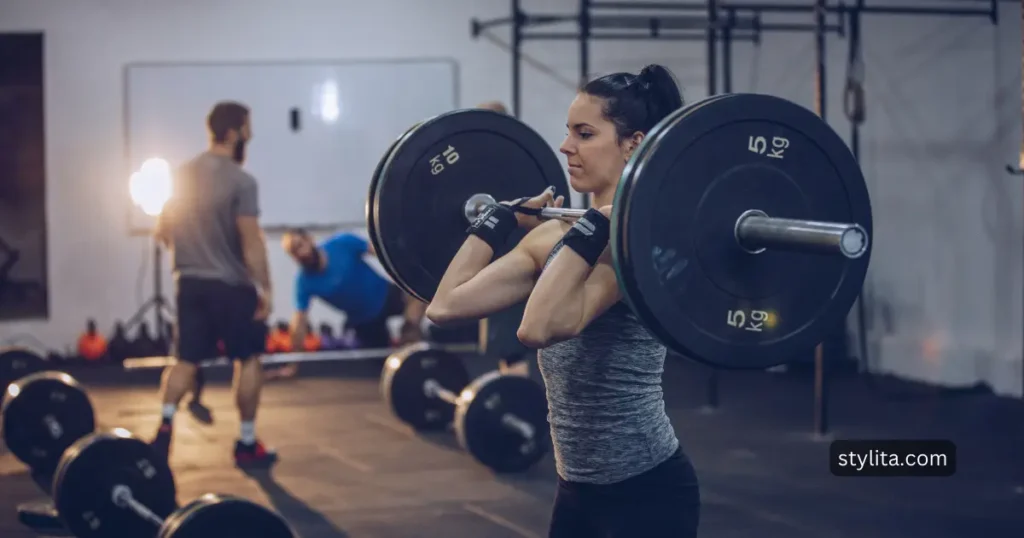
The use of weightlifting and other resistance training is essential for shaping your body’s composition. Frequent weightlifting workouts improve metabolism and encourage the creation of new muscles, which help reduce body fat. Exercises that target numerous muscular groups at once, such as squats, deadlifts, and bench presses, are considered compound exercises because they maximize the advantages of each workout session.
2. Resistance Bands
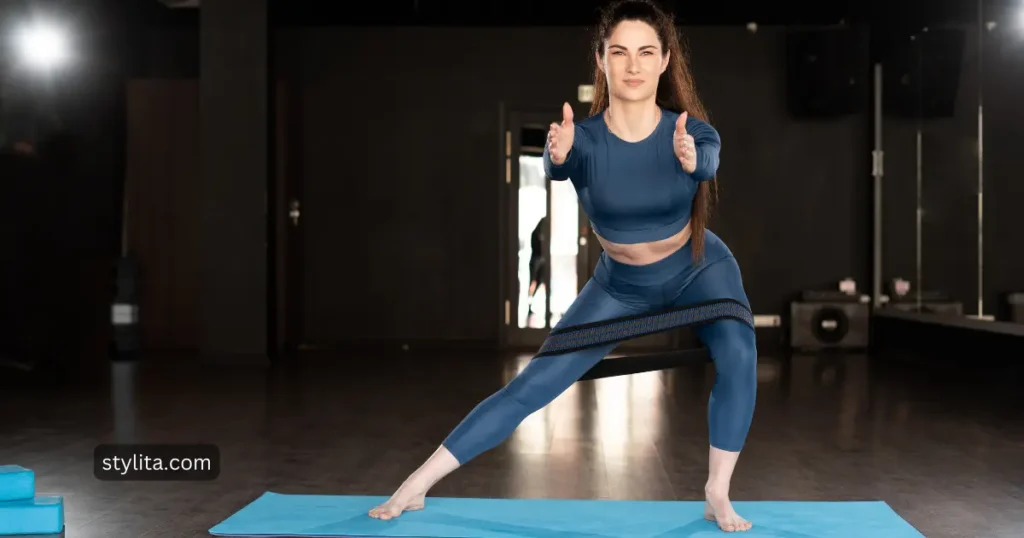
Resistance bands are a great substitute for people who want something more adaptable and easily obtainable. Because of their adjustable resistance, these bands are appropriate for a range of fitness levels. Resistance band exercises contribute to a positive change in body composition by strengthening and toning muscles.
B. Cardiovascular Exercise

1. High-Intensity Interval Training (HIIT)
A vigorous aerobic technique called HIIT is well-known for its effectiveness in accelerating fat loss and burning calories. Your body continues to burn calories after a workout when you alternate short, intense bursts of exercise with shorter rest intervals. This phenomenon is known as the “afterburn effect.” According to studies, HIIT is especially useful in decreasing belly fat, which is important for total body composition.
2. Cardio for Fat Loss
Running, cycling, and swimming are examples of traditional cardiovascular workouts that help improve body composition. These exercises help burn calories and improve cardiovascular health. A balanced diet and regular cardiovascular exercise both help to lower the amount of body fat overall.
C. Flexibility and Mobility Training

1. Yoga
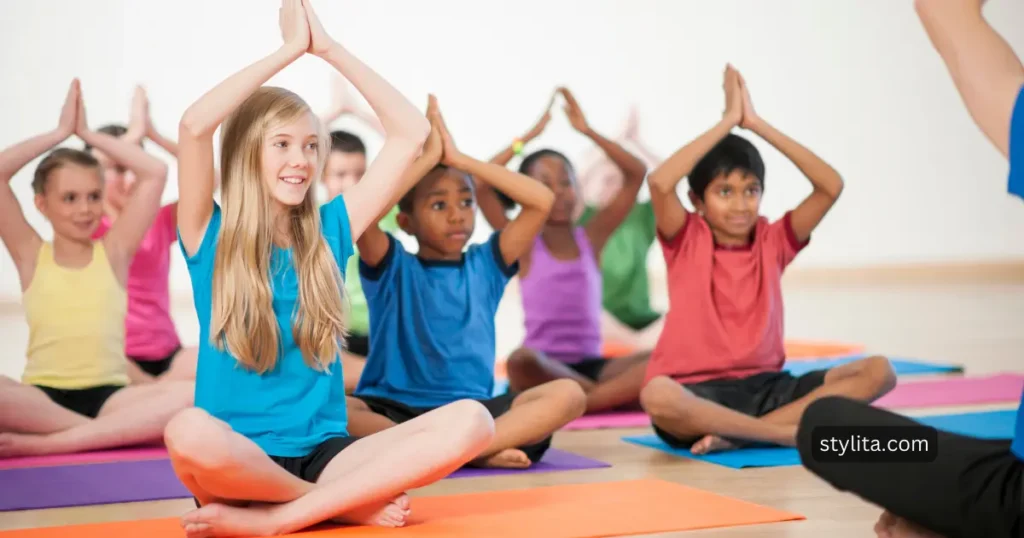
Yoga provides extensive advantages for body composition, despite being frequently linked to flexibility. Some forms of yoga have components that improve strength in addition to improving balance and flexibility. Multiple muscle groups are worked simultaneously in poses that promote lean muscle growth and fat loss.
2. Pilates
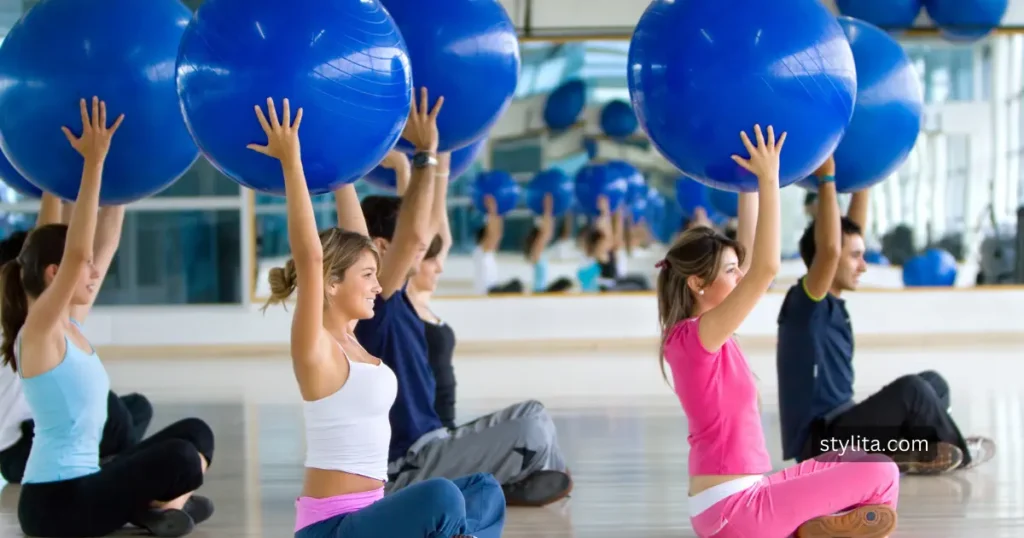
Pilates emphasizes flexibility, stability, and strength in the core. Pilates exercises tone the midsection by focusing on the core muscles. In addition to enhancing posture, a strong core helps achieve overall body composition objectives.
Nutrition for Body Composition

A. Importance of Nutrition
A key component of optimizing body composition is nutrition; exercise alone is not enough. A diet rich in nutrients and well-balanced promotes fat loss, muscle building, and energy for exercise. It is essential to comprehend the roles played by macronutrients (proteins, fats, and carbs) and micronutrients (vitamins and minerals) while creating a diet plan that will support your desired body composition.
B. Macronutrients and Micronutrients
1. Proteins
Proteins are necessary for the growth and repair of muscles. Lean meats, chicken, fish, eggs, dairy, legumes, and plant-based proteins are good sources of protein for a diet. Getting enough protein in your diet helps your body maintain and develop lean muscle mass.
2. Fats
Include foods high in healthy fats in your diet, such as olive oil, almonds, seeds, and avocados. Healthful fats promote a number of biological processes, including the synthesis of hormones, and offer a long-term energy source. Because fats are high in calories, moderation is crucial.
3. Carbohydrates
The main energy source is carbohydrates, particularly during vigorous exercise. Choose complex carbs to give you long-lasting energy and vital nutrients, such as those found in whole grains, fruits, and vegetables.
4. Micronutrients
To acquire the vital vitamins and minerals you need, make sure your diet consists of a range of fruits and vegetables. These micronutrients promote everything from immune system function to bone health, making them essential for overall wellness.
C. Meal Timing and Frequency
1. Balanced Meals
Organize your daily consumption into meals that are well-balanced and comprise a mix of carbohydrates, fats, and proteins. With a consistent release of energy throughout the day, this method supports your regular activities and exercise routine.
2. Pre- and Post-Workout Nutrition
It’s important to fuel your body both before and after exercise. Before working out, eat a well-balanced meal or snack that includes both protein and carbohydrates. Give protein a priority after a workout to aid in muscle recovery and repair.
Sample Body Composition Workout Routines
A. Full-Body Workouts
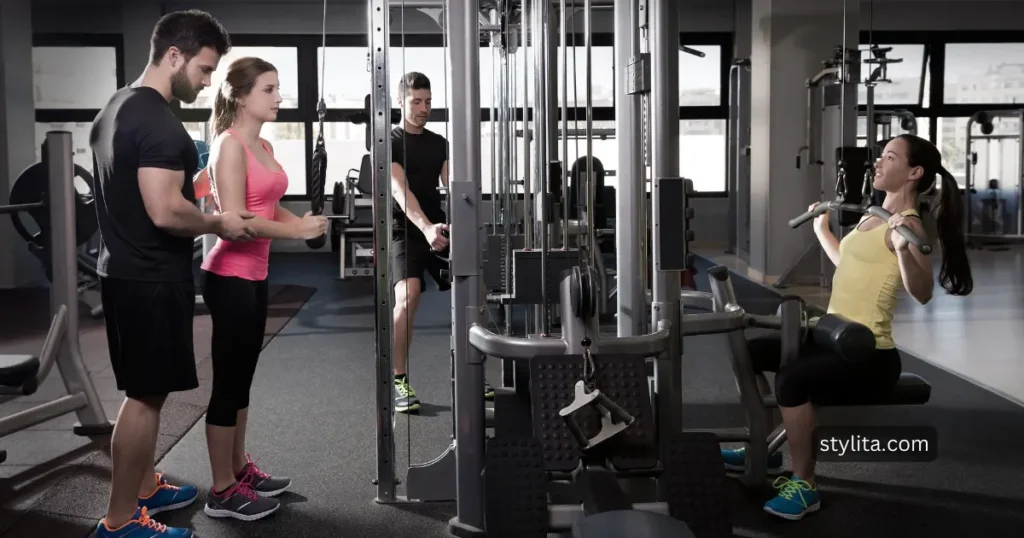
1. Circuit Training
Circuit training is performing a set of exercises one after the other with little to no break in between. This technique works several muscle groups at once, increases calorie expenditure, and supports cardiovascular health.
Circuit Training Sample Routine:
- Squats:
- 3 sets x 15 reps
- Push-ups:
- 3 sets x 12 reps
- Lunges:
- 3 sets x 12 reps per leg
- Plank:
- 3 sets x 30 seconds
- Bent-over Rows:
- 3 sets x 15 reps
2. Compound Exercises
Compound exercises recruit multiple muscle groups in one movement, making them efficient for body composition goals.
Compound Exercise Sample Routine:
- Deadlifts:
- 4 sets x 10 reps
- Bench Press:
- 4 sets x 12 reps
- Overhead Press:
- 3 sets x 15 reps
- Pull-ups:
- 3 sets to failure
B. Targeted Workouts
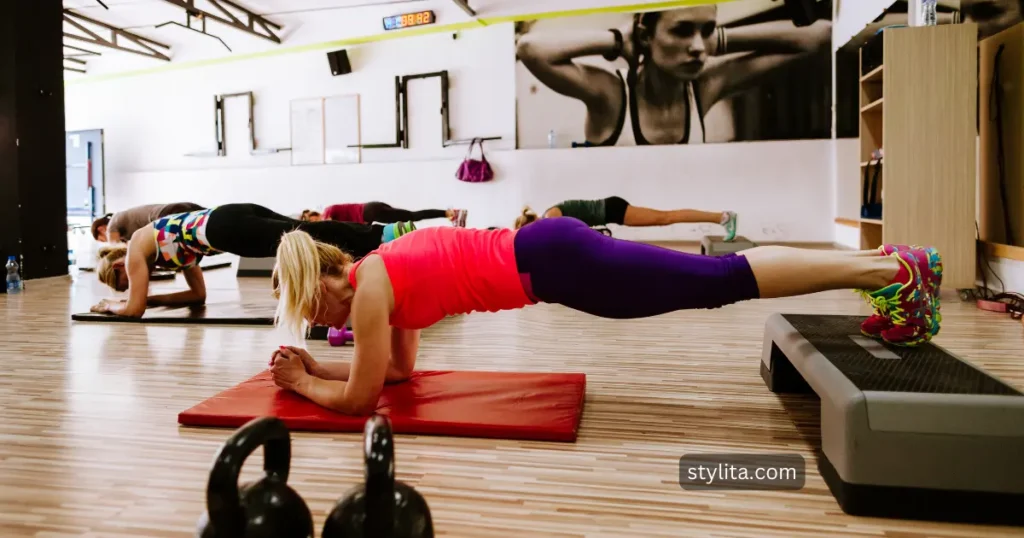
1. Core-focused Workouts
Core Workout Sample Routine:
- Plank Variations:
- Front Plank: 3 sets x 45 seconds
- Side Plank (each side): 3 sets x 30 seconds
- Russian Twists:
- 3 sets x 20 reps
- Leg Raises:
- 3 sets x 15 reps
2. Leg Day for Body Composition
Leg Day Sample Routine:
- Squats:
- 4 sets x 12 reps
- Lunges (Walking or Stationary):
- 3 sets x 15 reps per leg
- Leg Press:
- 3 sets x 12 reps
- Hamstring Curls:
- 3 sets x 15 reps
C. Cardiovascular Workouts
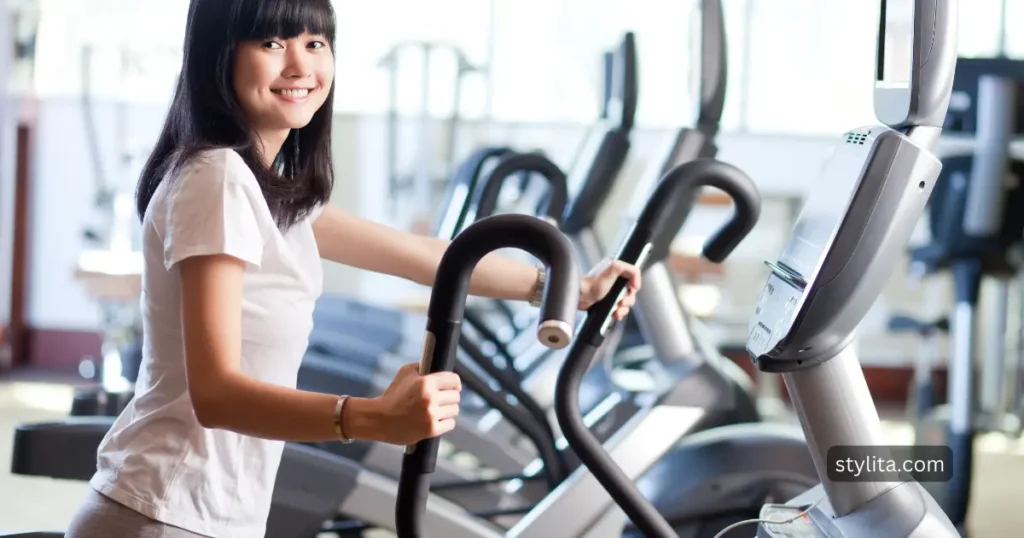
1. High-Intensity Interval Training (HIIT)
HIIT Sample Routine:
- Sprint Intervals:
- 30 seconds sprint, followed by 30 seconds rest
- Repeat for 15-20 minutes
2. Cardio for Fat Loss
Cardio Routine:
- Running:
- 30 minutes at a moderate pace
- Cycling:
- 45 minutes at a steady pace
- Swimming:
- 40 minutes of continuous laps
D. Flexibility and Mobility Training
1. Yoga
Yoga Routine:
- Sun Salutations:
- 3 rounds
- Warrior Poses:
- Hold each pose for 30 seconds on each side
- Downward Dog to Cobra Flow:
- 3 sets x 10 reps
2. Pilates
Pilates Routine:
- Hundred:
- 3 sets x 100 reps
- Leg Circles:
- 3 sets x 15 reps in each direction
- Rolling Like a Ball:
- 3 sets x 10 reps
Monitoring Progress

A. Tracking Changes in Body Composition
It’s critical to periodically assess your body composition to determine how well your exercise and diet are working. Track changes in body fat percentage and lean muscle mass with devices such as body fat calipers, smart scales, or expert evaluations. Pictures and measurements of important body parts, such the thighs, hips, and waist, serve as visible indicators of development.
B. Adjusting Workouts and Nutrition Plans
Periodic changes are essential to maintain development as your body adjusts to your original program. As your goals change, progressively up the intensity of your workouts, add new activities, or adjust your diet. Speaking with a dietitian or fitness expert might offer insightful advice specific to your need.
Challenges and Common Mistakes

A. Plateaus in Body Composition
Any fitness journey is likely to encounter plateaus. Try modifying your training regimen, upping the intensity, or reviewing your diet to break through workout plateaus. Since the body adjusts to repeated stimulus, change can rekindle progress.
B. Overtraining and Under-recovery
It’s admirable to push yourself, but overtraining without sufficient rest can impede progress and raise the risk of injury. Make sure you get enough sleep, take days off, and use recovery techniques like foam rolling and stretching to maximize your body’s reaction to exercise.
C. Inconsistent Nutrition
When it comes to exercise and diet, consistency is essential. Relying on fad diets, skipping meals, or binge eating can throw off your body’s balance. Develop enduring eating practices that support long-term success and are in line with your objectives.
Success Stories
Real-life Examples of Body Composition Transformations
Recognize that reaching your ideal body composition will involve ups and downs on the way. Examine the success stories of people who changed their bodies by being committed, persistent, and making wise fitness decisions. These tales might serve as a source of motivation and insight into various strategies that may be applicable to your personal fitness journey.
Conclusion

A. Recap of Key Points
In summary, body composition optimization necessitates a comprehensive strategy that includes focused exercise, a well-balanced diet, and regular monitoring. You can modify your fitness journey for long-term success by learning the subtleties of body fat percentage, lean body mass, and the effects of various workout regimens.
B. Encouragement and Motivation
It is desirable to start a body composition transformation. Remember that progress takes time, acknowledge minor triumphs, and remain dedicated to your objectives. Over time, your commitment to a healthier lifestyle will pay off, whether your goals are muscle gain, fat loss, or general well-being.

